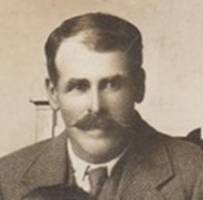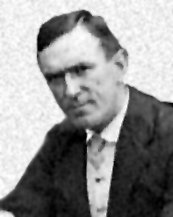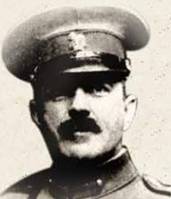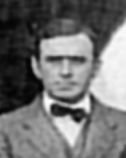Back to search results
Name: HIRTZEL, Clement Henry Armitage OBE




Nee: bro of Sybil, wife of Otto Waldemar Albrechtsen
Birth Date: 10.4.1879 Exeter
Death Date: 1971 Poole, Dorset
First Date: 1903
Profession: Engineer. Established East Africa Power & Lighting, also car and motorcycle business also farm at Limuru, retired to UK
Area: Nairobi, Parklands
Married: In East Sheen 15 Aug 1906 Emily Frances Alice Owen b. 23 Jan 1883 Mortlake, d. 27.10.1965 Surrey
Children: Elizabeth Ruth (Dawson) (28.5.1907 Nairobi-1988); Pamela Maud (15 Jan 1909 Wandsworth-1920); June Ursula Mary (Cook) (15 June 1911 Nairobi-1982); Guy Owen Theodore (22 July 1912 Nairobi-1997); Anne Northrop (Cosby) (31 Jan 1914 Nairobi-2000); Diana Clementine (16 Apr 1918 London-1986); Frances Emily (1920 Staines-2006)
Book Reference: Gillett, SE, HBEA, Cuckoo, Golf, Binks, Hut, Playne, Drumkey, Land, Advertiser, Pioneers, Gazette, Medals, North, Leader14, Red Book 1912
War Service: EA Pioneers, then RFC, Special Reserve Flying Officer
School: Kelly College, Tavistock; AMIMechE, AMIElecE, MSAE (USA)
General Information:
Freeman of Exeter
Cuckoo - He eventually joined Lieut. Bayldon RN (retd) in starting the first electric lighting plant - the Nairobi Electric Power Company. They obtained their power from the falls at the Ruiru River, beside the Fort Hall road, and brought it to Nbi. by overhead cables - a distance of 20 miles. From its birth the Company proved a profitable undertaking.
Captain of Nairobi Golf Club in 1908/9.
Playne - Mr Hirtzel came to BEA on Jan. 28, 1904, from S. Africa, where he was Consulting Engineer of the New Bloemfontein Gold Mine and Chief Engineer and Manager of the Delagoa Bay Tramways. He was appointed Boiler and Factory Inspector of the EAP on Sept. 22, 1908. As Asst. Engineer he equipped the following towns in Great Britain with electric tramways: Dublin, Ashton-under-Lyne, Cork, Potteries, Potteries Extensions, Leeds Extensions, Plymouth Extensions and was Engineer in charge of the equipment of the following: Devonport, East Ham, Hill of Howth Electric Railway (Dublin), Ilkeston, first part Spen Valley Light Railway, Canvey Island. In EA he obtained a concession for electric power and lighting of Nairobi, floated a company, and commenced equipment. Mr Hirtzel was Hon. Secretary and Treasurer Nairobi Golf Club, and is now Captain. He is a section commander Nairobi Volunteers, and also in charge of Colt gun. Mr Hirtzel is 30 years old (born April 10, 1879). His birthplace was Exeter, and he was educated at Kelly College, Tavistock, in the same county. Drumkey 1909 - Vice Captain, Nairobi Golf Club
Land - 1906 - C. Hirtzel - Building, 10 acres, Nairobi, Registered 6-3-06
Land - 1906 - C. Hirtzel - Building, 2 acres, Nairobi, Registered 3-9-06
Land - 1907 - C. Hirtzel - Grazing, 2644 acres, Reweru River, Registered 4-11-07
Land 1909 - C. Hirtzel - Buildings, 1 acre - Parklands - 5/10/05 - Leasehold for 50 years from 5/10/05 - Registered 28/7/09
Land 1909 - C. Hirtzel - Agricultural, 636 acres - Kikuyu - 11/4/04 - Homestead, freehold - Registered 1/10/09
Advertiser - 2/10/1908 - Nairobi Amateur Dramatic Society - "Bluebeard in East Africa" - C. Hirtzel - Court Jester Advertiser - 16/10/1908 - Nairobi Golf Club - Bowring Monthly Handicap - C. Hirtzel, handicap 2
Advertiser - 12/3/1909 - Nairobi Golf Club - Bowring Monthly Comp. - C. Hirtzel
Pioneers - Limuru - Three Tree Farm - Margot Howard (nee Cane) - WW1 - The owner of the next door farm, Mrs Hirtzel, asked if she could come and live at Three Trees Farm as she hated being alone. My mother was delighted, and the fundi built the first round cottage at Brackenhurst. The two women then decided to take convalescent officers as non-paying guests. So more cottages were built, until we were quite a large household.
Gazette - 7/4/15 - Liable for Jury service, Nairobi District - C. Hirtzel, Electric Engineer
Gazette - 23/9/1914 - Appt. - To be Lieutenant, Pioneer Company - Pioneer Sergeant C.H.A. Hirtzel
Gazette - 11/8/1915 - Appt. - EA Pioneer Company - Resignation - Lieut. Clement Henry Aemitage Hirtzel, to date 22nd January 1915
Medals - East African Pioneers Company - Lieutenant
North - Engineer; arr. EA from South Africa 28-1-1904; Land Grant applications Nairobi Hill 16-3-1904 & Kikuyu Road 23-3-1904; obtained concession for supplying Nairobi with electricity from Sir Charles Eliot April 1904; 'a penniless company-promoting counter-jumper from the Cape' (McGregor-Ross, RH)
Mills - He arrived in Nairobi in February 1903, after a failed venture in Mozambique, to settle in the proposed Jewish National Home Scheme which was subsequently shelved. ……………. Hirtzel's own family, 4 of his 7 children were boirn in Kenya apparently left for Britain with him and none came back. In 1952, Hirtzel was living aboard his yacht, the Mabroukie, so named after his Limuru farm, when he wrote from the Mediterranean to the Standard Newspaper, 'As soon as I can sell my boat,' he said, 'I intend returning to the country I really love more than any other.' In 1961, he again wrote that he was still waiting for fortune to favour him 'in the Irish Sweepstake Lottery,' at which time he hoped to get himself back to Kenya. So far as we know, Clement Hirtzel never made it.
Leader14 - Business Register - C. Hirtzel, Motor Garage, Nairobi
Red Book 1912 - C. Hirtzel - Nairobi
Red Book 1912 - Committee Member - Nairobi Colonists' Association
Red Book 1912 - Committee Member - Limuru Farmers' Association
Binks - started the Nairobi Electric Light Company
SE - C. Hertzal - July 1907 and C. Hertzal - Mar 1910
Christine Nichiolls in Old Africa Oct 2017 -i n order to supply electricity for lighting and power in the district of Nairobi, the Nairobi Electric Power and Lighting Company Limited, with a capital of £30,000, was founded in February 1906. Its originator was Clement HA Hirtzel (misspelt Hertzel in most sources), who had arrived in East Africa from South Africa in January 1904. Described as ‘a penniless counter-jumper from the Cape’ by McGregor-Ross, Hirtzel had actually been born in Exeter and had obtained engineering qualifications. He also had a motor car and motor cycle business in Nairobi, where he lived at Parklands, and he obtained a farm at Limuru. He was awarded an OBE and became a freeman of the city of Exeter, to which he later retired.
In April 1904 Hirtzel obtained a concession for fifty years from the Governor, Sir Charles Eliot, to supply Nairobi with electricity. He signed a draft contract to do so in 1905, and set up a company named the Nairobi Power and Lighting Syndicate. Charles Udall was chief engineer and the managing director was RC Bayldon, formerly a lieutenant in the Royal Navy, who later became chairman of Nairobi’s Chamber of Commerce. The general scheme was to generate electricity by means of water power, then running to waste, to supply Nairobi and the surrounding country. In November 1906 the company chose to use the first fall on the Ruiru River below the Fort Hall road, some 18-½ miles by road from Nairobi.
Info from Tom Lawrence: 1902 He moved to South Africa
1903 He was Consulting Engineer of the New Bloemfontein Gold Mine and Chief Engineer and Manager of the Delagoa Bay Tramways
1903 (Feb) He arrived in Nairobi, after a failed venture in Mozambique, to settle in the proposed Jewish National Home Scheme which was subsequently shelved (The History of Muthaiga Country Club, 2006, by Stephen Mills).
1908 (22 Sept) He was appointed Boiler and Factory Inspector of the E.A. Protectorate (Somerset Playne).
1912 Hirtzel founds Nairobi Motor Garage. It started its activities with the import of the Ford Model T, and was the first company to distribute vehicles in B.E.A. It went on to become The Cooper Motor Corporation, the largest importer and car-assembly company in Kenya
(2014 Thesis by Thomas Mabera Mocha (G62/69288/2011)
1922 (2 Aug) His patent for “An improved valve for the internal combustion engine” is prioritized
(https://patents.google.com/patent/US4779584). Patent Ref. 206,238. Hirtzel, C. H. A., and Celerity Valves, Ltd. Register a patent relating to the head and stem of a poppet valve for internal-combustion engines are made hollow as shown, so that the fresh charge has access to the interior and assists in maintaining the valve cool
(https://patents.google.com/patent/US4779584). His patent was published in 1923.
The yacht was ‘Mabrouka’ which was originally owned and named by Tom Lawrence VC in the 1920s -Tom ending up in Kenya in 1947.
Retired to UK.
Info from family: Clement was fortunate in meeting Sir Philip Dawson, the great authority on electric traction, and helped him compile his first Pocket Book Guide on Electric Traction ever published in England. When this was complete, and he had also been attending lectures at Finsbury College, he was sent to Dublin as Assistant Engineer on the construction and equipment of the Dublin United tramways. After a few months Mr. Roger, the Chief Engineer, retired and recommended Clement Hertzil as competent to take over the job which he did. After this Clement was responsible for the equipment for the Electric Trams of Ashton- under-Lyne, Cork, Leeds, The Potteries, Devonport, Plymouth, East Ham, Hill of Howth and SpenValley. Arthur Francis Hertzil, Clement's elder brother, exported the first motor cars to South Africa in 1902 and Clement went out as his engineer. He was then appointed Engineer and Tramway Manager to Lorenco Marques, but found the climate in those days extremely unhealthy. Eventually he went on to British East Africa (now Kenya) with the first pioneer settlers, and obtained a concession from the Government for the sole right to supply Nairobi and District with electricity. He carried out a survey, designed the scheme, and floated the Nairobi Electric Light and Power Company and carried it out. (At time of writing author says it was ‘the most successful enterprise in this new Colony with capital of £11,000,000.'
Clement was then appointed Boiler and Factory Inspector by the Government, which included making rules for the generation and distribution of electricity, and the control of water-power and irrigation. Incidentally he made a survey of the Ripon Falls Scheme, for using the water power of the birth of the Nile, but came to the conclusion that the cost would be prohibitive for a private company and without sufficient demand to pay the interest of the capital outlay involved. This was then accomplished by the Uganda and Sudan Governments combined, and cost 12 million. When the above temporary appointment came to an end Clement obtained the Canadian Ford Concession for British East Africa and Uganda, and opened the first garage and engineering works in the country, as well as doing every kind of engineering work, hydro-electric schemes, irrigation, light railways, etc. and installing fibre-decorticating machinery. When war was declared in 1914 Clement had most of the private engineering work of Kenya. All businesses came to a standstill and were commandeered by the Government. Nothing daunted Clement then helped to form the East African Pioneers, and went to the Front in Command of the 1st Unit, and was responsible for roads, bridges, etc. and a 30 mile road into the Serengeti Desert to enable troops to cross into German East Africa. They were also responsible for fortified camps, block houses, signalling stations, water supplies (including dams and filter beds in the Bura Hills) and a 14 mile pipe line to the middle of the Serengeti Desert, with ten 10,000 gallon tanks buried in Maktau Camp in case the enemy cut the line (which did happen later). The railway to Taveta was later built on this road.
When fighting came to a standstill Clement returned to England and joined the Royal Flying Corps as a Technical Officer. He went to a course at Farnborough and on to France. After a few months he returned to the War office to assist General McInnes in Aircraft Production Development. He was appointed Staff Captain-in-Charge of this Department. When this work was taken over by the Ministry of Munitions, he was appointed to command Leeds Aircraft Repair Park for the North of England. This was so successful that he was then appointed to command the largest Repair Park at Farnborough (output trebled in three months). He was then recalled to the Air Ministry to organise Aero Engine Repair throughout Great Britain. When this difficulty had been overcome, he was appointed to command the Salonika Aircraft Park and Base Depot; to reorganise the equipment of the Squadrons in the Balkans, and to equip them with the latest fighters and bombers which resulted in the collapse of the Austrian and Bulgur armies having bombed their Headquarters and concentrations for 21 days and nights every half hour so the enemy broke and fled through the 10,000 foot mountains passes, where they were caught and smashed the Serbs and Greeks chased them back to Belgrade and Sofia, killing everyone they could catch. Clement was mentioned in Despatches and gazetted Officer of the British Empire, rank Major.
Clement was then appointed Chief Technical Adviser for disposals of surplus Government Property for the Navy, Army and Air Force.Prime Minister Lloyd George lent the Greek government £10,000,000 with which they bought all the surplus. Clement then returned to England and set up as Consulting Engineer and was responsible for the developments in connection with motor cycle and car racing at Brooklands and opened a workshop there.He then went on to India, Ceylon, Burma, Malay, Java and Sumatra for Rootes, Ltd developing their car sales agencies. Later he went to Ceylon to manage General Motors Agencies, and was also appointed Board of Trade Inspector of tea plantation machinery.
In 1926 Clement Hertzil invented an entirely new system of coal mining and distillation of coal by the low temperature carbonisation process, which would yield 16 gallons of motor spirit, 26 gallons of lubricating oils, 30 gallons of diesel oils, 30 gallons of heavy oils (suitable for firing boilers), 20,000 cubic feet of waste gas (sufficient to supply cheap electricity for the whole country) plus 900 lbs of smokeless fuel or coalite (the only fuel which should be allowed). It is estimated that £250,000,000 worth of damage is done per annum from smog. Clement hammered the Ministry of Fuel and Power for 30 years.
Now, at last some of the ideas are being adopted. Instead of spending £5 a ton on transport, at least £5 a ton extra could have been gained from the ingredients, and the filth and dirt would have been kept where it originated. If adopted, it would have revolutionised the coal industry and obviated the necessity for importing expensive oil. In 1939 Clement offered his services to the Air Ministry, but was considered too old. He organised production of aircraft parts, as Consulting Engineer. During the war he commanded a Company of the Home Guard, and served as an Air Raid Warden. After the war he became interested in yachting, and fitted out four motor yachts and eventually took one 42 ton motor yacht to Belgium through canals to the Mediterranean and Malta. He lived on his motor yacht the Mabroukie, named after their farm in Limuru, Kenya, at Port Darse, Villefranche-Sur-Mer. In 1956 Clement came to Exeter and became a Freeman of the City of Exeter on 18th July by His Worship the Mayor, Dr. Fuller. He claimed this as being the oldest surviving son of his father George Hirtzel. 1961 This appears to be the last time that contacts in Kenya heard from when he expressed the wish to see Kenya once again as being his favourite country.
Back to search results




